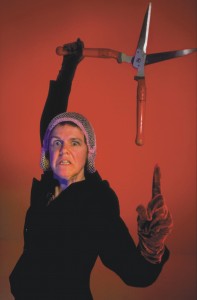Carran’s working diary 3: From my notebook
The Fortress. The Threshold. The Dark. The Hymn. Writing in a bed due south. Dark night of the soul. Marching. “a turbulent mixture of old peoples’ home, maternity, mental and general hospital, children’s home, school and shelter for the homeless” (Down Poorhouse Lane) Asking for more Twist’s sin.
“This is Blue Boy, one of my success stories.
I am very pleased with the way everything is run in the home (house). The cleanliness of the children and the house itself and I particularly enjoyed fifteen minutes spent with this little boy who is really rather sweet.” from Looking for the Tallyman.
Going out and Coming in.
Glee club – multi-tracking for a solo piece. Voices in the dark.
Playing the violin badly.
Joseph and his brethren
Teaparty with speeches and recitations which reminds me of the first scene of The Last Women where the prisoners entertain the visitors with some light entertainment in this case a mimed story of Inanna’s descent into the underworld – another story of going in and coming out, going down and coming back up.
“We cannot send the paupers and patients to theatres and concert rooms, and we are of course a long way from the time when every workhouse will have its own company of actors and vocalists; but if music and good plays are desirable privileges for the rest of us, we ought to be gratified when amateurs are willing and able to allow those who cannot possibly come to town to enjoy them, to share to some extent in the benefits of healthy recreation.” – Jenny’s pages
“let them go to the pantomime”
“The children had no pleasure except once a year
styles of performance – the teaparty, the pantomime, the recitation, the report, the meeting, the concert,
whilst these troupes no doubt had the best possible motives, it had to be admitted that they were often not worth the coffee that was provided for their refreshment. The performances really inflicted cruelty on the poor old folk who had to listen to them.
postponing bedtime for an hour or two
Musical performance – singing, playing an instrument, performing in an orchestral or brass band – was a core part of the educational curriculum for the poor child in the 19th century
Learning to sing, play and march
performance of work
‘training of pauper children’
“LINE UP SINGLE FILE QUICK MARCH LEFT RIGHT LEFT RIGHT LEFT RIGHT
(BE BACK SOON AND LIFTED FOR TALLYMAN)
lessons in the Bible, industrial instruction, as well as reading, writing and arithmetic, geography, domestic science
WHAT ABOUT COLLECTING SOME ORAL HISTORIES ON WORKHOUSE MEMORIES IE THE WORD WORKHOUSE WHAT DOES IT MEAN TO YOU
WHAT IS A WORKHOUSE? VIDEO TASK.
On the one hand free play and on the other ordered marching and singing – two ways to encourage the children of the poor to transform themselves into morally upright, productive workers. There is a tension between the discipline and freedom of cultural activity here that concerned Matthew Arnold, later in the century, as well as a related tension between notions of an instrumental and intrinsic value of cultural activity that are still resonant today.
THE STRAIGHT AND THE ROUND LINE
From Jenny’s blog again:
TYPES OF ENTERTAINMENTS IN THE WORKHOUSE:
1) Religious groups offering concerts, including local choirs and also groups of children from Rochdale’s many Sunday schools coming to the workhouse to sing sacred songs, perform dialogues and recitations, and sacred dramas for the poor.
2) Temperance Society entertainments that included testimonials, lantern shows, recitations, songs and sketches.
3) Performances from amateur groups participating in the newly emergent civic culture in Rochdale, in the main offering concerts – choral, orchestral and band performances, including singing, recitation and instrumental music, but also sketches and dialogues. These groups included glee clubs, minstrel groups, lady choirs and orchestral performers, including the Police band and Postmen’s band.
4) Popular entertainments – pantomime, dioramas, fairs – sometimes with an instructional bent, and sometimes not.
by the 1930s or so the building had become more hospital for the old and vulnerable rather than ‘bastille’ for the poor.
LINK TO NANA IN HOSPITAL
I had a view of Bentham based on Dickens’ famous critique of utilitarianism in education in his novel Hard Times, where the children have numbers rather than names, are taught ‘Facts … nothing but Facts. Facts alone are wanted in life’, and ‘girl number twenty’ is harshly berated for suggesting that a carpet with flowers would be a pleasant thing to have in a home (a carpet with flowers = ‘fancy’ rather than ‘Fact’).
LINK TO MUM’S NUMBERS – her number was 25 in the children’s home.
CHECK BACK IN RECORDS FOR CP NUMBER
(a) more humane than this – he advocates strongly for play, music, other activities for the purpose of stimulating the greatest happiness amongst children AND, at the same time, (b) far worse than Dickens depicts. So for example, Bentham argues for a pauper management system based on the East India Company – that vanguard of free market capitalism – and here the poor are to be put to work in ‘industry houses’ that are made profitable, primarily, via CHILD LABOUR!
JOBS MUM USED TO DO
when they are released (which, according to Bentham’s calculations, would not be until they had reached around 20 years old, given the need to make the industry houses profitable via their productivity).
MUM’S RELEASE….FOSTER HOME BUT THEN ALSO THE NEW BIRTH CERTIFICIATE/ADOPTION CERTIFICATE TO GET INTO THE NAVY
PLAY AS WORK WORK AS PLAY
THAT SINKING FEELING
THE SINK CLASS
THE SINK
HOOK LINE AND SINKER
running, leaping, dancing, capering


No comments
Be the first one to leave a comment.